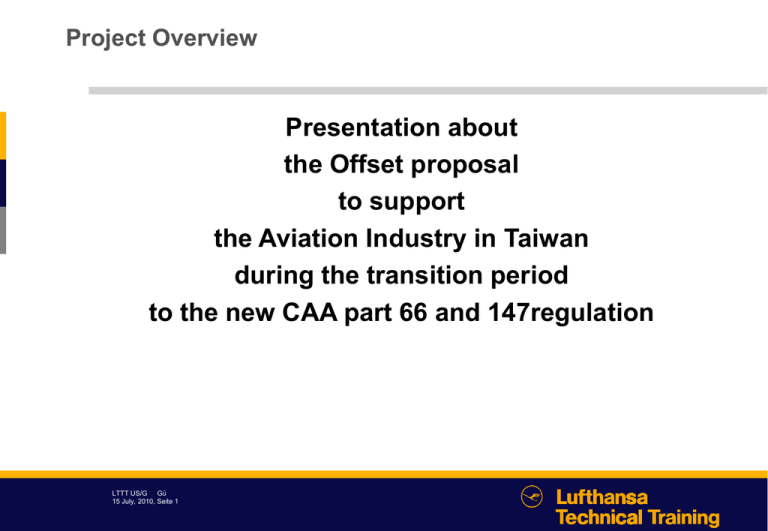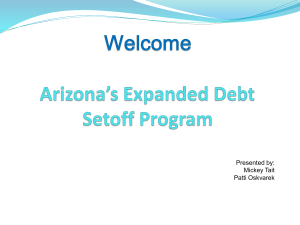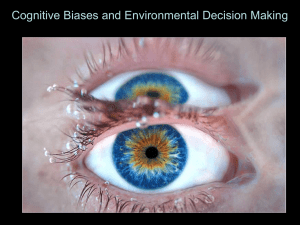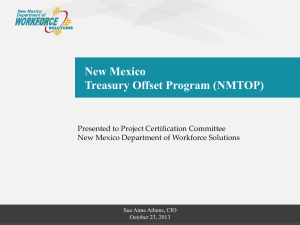CAA Offset Presentation 2010-07
advertisement

Project Overview Presentation about the Offset proposal to support the Aviation Industry in Taiwan during the transition period to the new CAA part 66 and 147regulation LTTT US/G Gü 15 July, 2010, Seite 1 Project Overview • Project: Support the Taiwan Aviation Industry to upgrade their maintenance personnel and their training department abilities to comply with the new CAA part 66 and part 147 regulations. • Sponsor: Thales • Local Partner: Taiwan Aviation Industry, represented by EGAT and supervised and controlled by the Civil Aeronautical Administration of Taiwan R.O.C. • Foreign Partner: Lufthansa Technical Training Germany Time line • Estimated project approval: October 2010 • Estimated project start: November 2010 • Project duration: max 2 years LTTT US/G Gü 15 July, 2010, Seite 2 Reasons for the Offset Proposal • The Taiwan CAA in discussion with airlines and MRO’s has nearly completed the draft for the new CAA part 66 and 147 regulations. The draft is expected to be released in the second half of 2010. • The final version is expected to be empowered until end of 2011. • The previous license knowledge and skill requirements were based on FAR part 65 standards. • The new license knowledge and skill requirements are based on EASA part 66 standards including the curriculum for basic and type training. • There is a huge gap between those both requirements and the arrangement of the training modules is completely different between the old and new regulation. • Conversion training and/or conversion examinations will be needed to upgrade the present license holder (estimated 1800 license holders) to the new license without limitations. LTTT US/G Gü 15 July, 2010, Seite 3 Reasons for the Offset Proposal (cont.) • Taiwan is the first National Aviation Authority transferring from an FAA based system to an EASA based systems. There is no documentation and experience available from another aviation authority which can ease and speed up the comparison. • The comparison determines what conversion requirements have to be covered by each license holder to convert to the new license. • To convert, license holders have to take examinations. For the preparation training or self preparation there are no customized books available. • The license holder would have to pick out of many books what they need to learn what causes them much more time to prepare as it is necessary. • Since the differences between the old and new licenses are not defined yet, there is no curriculum for the conversion training. LTTT US/G Gü 15 July, 2010, Seite 4 Reasons for the Offset Proposal (cont.) • The data base for examination questions covering the additional knowledge for the conversion requirements is not available yet. Examination questions need to be prepared in accordance to the conversion requirements. • For airlines and MRO’s everyday a qualified mechanic is absent for training costs money and influences production. They want that the conversion is as efficient as possible within the shortest time and highest passing rate. • That means an optimized program for the conversion is needed, including curriculum, training books, examinations, avoiding any waste of time, Who can provide enough qualified manpower and has the know-how to do this job and how long will the preparation take? And who will pay for all those man hours needed? Conclusion: An Offset Program is needed. LTTT US/G Gü 15 July, 2010, Seite 5 Relationship of involved parties Offset Provider TBD Offset Service Provider - LTT Offset Authority IDB / ICPO Offset Recipient EGAT Offset Beneficial China Mandarin Airlines Airlines UNI Air Trans Asia Airlines LTTT US/G Gü 15 July, 2010, Seite 6 FAT? AIDC Air Asia Offset Controller CAA ACTS Daily Air Sunrise Airline 147 Schools Tasks and services included in the Offset program Conversion and transition: • The offset program shall provide the Taiwan Aviation Industry with: • Analysis of the differences between the current license and the new license requirements. The analysis report needs to be approved by CAA and to be converted into limitations for the new license, the work already done by China Airlines can be used as a base. • Out of this analysis a curriculum shall be developed which knowledge requirements are necessary to remove those limitations. • Experience and education background of present license holders shall be assessed to reduce the required duration of conversion training to the minimum. LTTT US/G Gü 15 July, 2010, Seite 7 Tasks and services included in the Offset program Conversion and transition (cont.): • Training books shall be tailored for teaching and self study to meet those knowledge requirements. • An Examination Data Base will be developed which will be controlled by CAA to perform the conversion examinations. The data base software can be purchased in accordance with Taiwanese Aviation Industry requirements. • Providing a summary conversion report of the Taiwanese Aviation Industry and individual reports of each Airline and MRO LTTT US/G Gü 15 July, 2010, Seite 8 Tasks and services included in the Offset program Conversion and transition (cont.): • Training of 300 license holder for the conversion examination. • Consulting services for the maintenance departments to help setting up the new procedures for license conversion issues and release to service. • Assist the authorities in all kinds of needed support to speed up the conversion process. • Experts from Europe will be brought to Taiwan for the specific jobs. • The CAA will oversee and control the entire project and will allocate resources and services to airlines and MRO’s as needed. • Other demands which can be defined by airlines and MRO’s. LTTT US/G Gü 15 July, 2010, Seite 9 Tasks and services included in the Offset program Basic Training Setup: • The offset program shall provide the Taiwan Aviation Industry with: • Training books and training media for CAT-A, B1 and B2 basic training. • Provide the curriculum and instructor guides for CAT-A, B1 and B2 basic training. • Provide the examination questions for CAT-A, B1 and B2 basic license examination . • Support 147 basic training schools to set up their training, qualify their instructors and examiners and setup the required practical training. • Provide new staff training based on EASA basic training standards. for a period two years. LTTT US/G Gü 15 July, 2010, Seite 10 Tasks and services included in the Offset program Type Training Standardization: • The offset program shall provide the Taiwan Aviation Industry with: • Provide the course lay-out for approved type training courses and examination questions. • Provide the standards for new type training concepts integrating maintenance simulators and electronic documents. • Provide a type training course (e.g. A320) as a best practice example of the new training concept for seed instructors within the airlines and MROs . • Setup standard and develop procedures for the practical on the job training. • Train practical OJT instructors and assessors. LTTT US/G Gü 15 July, 2010, Seite 11 Tasks and services included in the Offset program Type Training Standardization (cont.): • Provide task training curriculums, training and approval procedures and training materials for CAT-A. • Transfer the know-how for the generation of Training Needs Analysis (TNA) • Updating training for instructors, examiners and assessors. • Provide methodology training (same as for EASA staff) for setting up examination questions, including validity, reliability, training level and difficulty level. • Practical Assessor, Examiner and Seed Instructors training. • Support for maintenance staff who have previously joined EASA like CAT-A training to receive the CAA CAT-A qualification LTTT US/G Gü 15 July, 2010, Seite 12 Tasks and services included in the Offset program Consulting services: • Coaching of surveyors, inspectors, and auditors for the aviation industry and CAA. • Solving problems related to the regulation change (e.g. quality system procedures and organizational structure and reflect the changes of the Part 66/147 and their impact on CAR 145…) • Support the final drawing up of the CAA part 66 and 147 regulations. Experts from the Taiwanese aviation industry will be included for this task. • Pre-survey of part 147 applications for type training and basic training. • Influence and adoption evaluation of new NPA’s (e.g. NPA 2007-02 / 2007-04 / 2009-05) LTTT US/G Gü 15 July, 2010, Seite 13 Tasks and services included in the Offset program Consulting services (cont.): • Information service about evolution of the EASA regulations. • Draw up procedures for license extensions • Support the setup and usage of individual log books for practical experience • Support to setup procedures for logbook assessor qualification and terms of reference • Consulting services for training schools of Airlines and MRO’s to gain 147 type training or/and basic training approval. This Includes examination procedures, practical training set up, and MTOE procedures. LTTT US/G Gü 15 July, 2010, Seite 14 Timeframe for the Offset Project • The executive committee of the ICP office is deciding every 3 months on offset applications. • 1 month after the decision for this offset project the analysis will start and will take about 3 months. Finished sections of the analysis can already be submitted during this period for review by CAA. • The curriculum can be finished within 3 weeks after the approval of the analysis. • The preparation of the training programs will take about 4 months. During the same period the examination data base can be prepared and instructors, examiners and assessors can be trained. • Conversion examinations and courses can be performed directly afterwards. LTTT US/G Gü 15 July, 2010, Seite 15 Offset Rules Offset rules: • An offset provider has offset credit obligations depending on the value or his sales to a country. These credits can be used for offset projects. • An offset project can be applied by an organization which needs such a project or the offset provider can apply by himself. • The project is performed by a foreign company which provides the special know-how, needed to perform the project. • The ICP office reviews the application and if there is a positive result it will submit it to the executive committee for final decision. LTTT US/G Gü 15 July, 2010, Seite 16 Offset Rules (cont.) Offset rules: • The real costs of different services are converted into offset credits. • Depending on the technical value of each service a multiplier applies. Multipliers can be between 1 and 10 depending on the technical value. • Standard products which can be purchased everywhere have a low technical value. Products and services which can not be purchased on normal base have a high technical value, e.g. training books customized for a conversion program. • The sum off the calculated credits from all offset services is deducted from the offset obligations from the offset provider. • For the received services the offset recipient should pay 0.35% of the value of the credits received back to the IDB office. LTTT US/G Gü 15 July, 2010, Seite 17 Offset Rules (cont.) Calculation example: Assumption for conversion training. In order to remove all limitations from the new license it is assumed that e.g. 700 hours of conversion training is needed. Each hour would account for 350 NT. Since the technical value in offset projects is appreciated by a multiplier the technical value of training is normally considered as the multiplier 5. 350 TWD * 5 = 1750 TWD. In accordance to Taiwan offset regulation the recipient must return 0.35% of the received value to the IDB office. 0.35% of 1750 TWD = 6.125 TWD per training hour. LTTT US/G Gü 15 July, 2010, Seite 18 How can this offset project help to perform the change? • The same principle applies to consulting services. For services which benefit the entire aviation industry system for sharing must be defined. • Since this sharing ratio is difficult to be evaluated the 0.35% should be refunded to the airlines and MRO’s by the offset service provider. LTTT US/G Gü 15 July, 2010, Seite 19 Qualification of the Service Provider Why is LTT qualified to perform the conversion project services? LTT was approved as the first 147 school under JAA and later under EASA. LTT has performed the same services for Lufthansa Technik. LTT was supporting the conversion in UK, Singapore and Malaysia. LTT has been selected by the EU to build up the European EASA examination data base. LTT has long term experience in Asia and especially in east Asia. LTT has the necessary resources needed for such a project. LTTT US/G Gü 15 July, 2010, Seite 20







